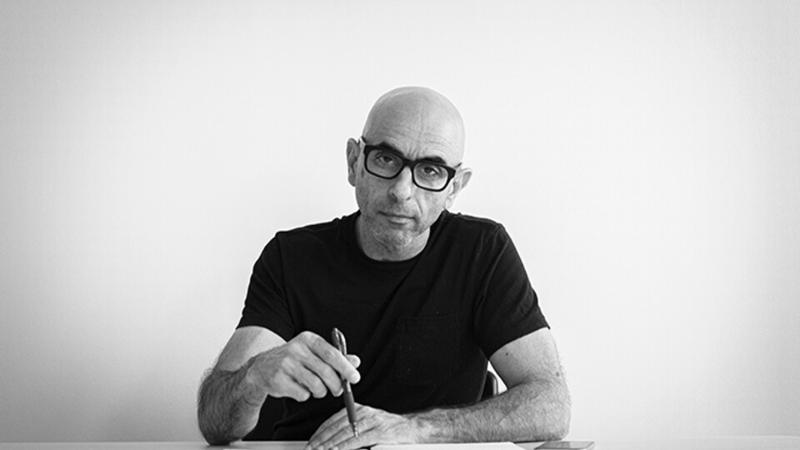Join us for the first Hyde Lecture of the season featuring Nader Tehrani, a distinguished designer of architecture school buildings. In his captivating talk titled 'The Animate Analytique,' Tehrani will delve into the role of representation in architecture and the essential visual literacy needed for the design process. Discover the transformative power of architectural representation and its impact on the creative process.
Nader Tehrani: A Renowned Designer of Architecture School Buildings
Discover the impressive work of Nader Tehrani, the founding principal of NADAAA and a professor at The Cooper Union. Learn about his expertise in design innovation and his significant contributions to the field of architecture.
Nader Tehrani, a highly respected figure in the field of architecture, is the founding principal of NADAAA, a practice dedicated to design innovation. He is also a professor and former dean at The Cooper Union. With his extensive experience and expertise, Tehrani has made significant contributions to the design of architecture school buildings.
His work has received numerous prestigious awards, including nineteen Progressive Architecture Awards. Tehrani's designs have been exhibited at renowned institutions such as MOMA, LA MOCA, and ICA Boston. His impact on the field of architecture is evident through his inclusion in the permanent collections of the Canadian Center for Architecture and the Nasher Sculpture Center.
The Significance of Representation in Architecture
Explore the importance of representation in the field of architecture and its role in the design process. Understand how visual literacy plays a crucial role in communicating ideas and concepts in architectural design.
Representation plays a vital role in architecture, serving as a means to communicate ideas and concepts. In the design process, visual literacy is essential for architects to effectively convey their vision. By utilizing various forms of representation, architects can showcase critical part-to-whole relationships and demonstrate the connections between different design elements.
Architectural representation goes beyond simple drawings and plans. It involves the incorporation of time, motion, and fluid connections between different forms of representation. This dynamic approach to representation allows architects to explore and express their ideas in a comprehensive and engaging manner.
The Transformative Power of Architectural Representation
Discover how architectural representation can transform ideas into tangible designs. Learn about the composite drawing tradition and its evolution into the animate analytique, a tool that incorporates time, motion, and fluid connections to illustrate the creative process.
Architectural representation has the power to transform abstract ideas into tangible designs. The composite drawing tradition, exemplified by the Beaux Arts analytique, reveals critical part-to-whole relationships and tectonic fragments at varied scales. This tradition showcases how even organic artifacts can be the result of hybrid thinking.
The animate analytique builds upon this tradition by incorporating time, motion, and fluid connections. It serves as both a design tool and a post-game analysis, constructing a narrative that synthesizes heterogeneous ideas. By utilizing specific modes of representation, architects can engage in a dialogue that enhances the creative process and reveals the instrumentality of different forms of representation.
Advancing Health: Planning and Designing for Healthful Places
Explore the College of Architecture's 2023-24 Hyde Lecture Series, which focuses on the theme of 'Advancing Health: Planning and Designing for Healthful Places.' Discover the importance of the built environment in promoting human health and well-being.
The College of Architecture's 2023-24 Hyde Lecture Series centers around the theme of 'Advancing Health: Planning and Designing for Healthful Places.' This thought-provoking series highlights the crucial connection between the built environment and human health. By strategizing and creating healthful places, architects and designers can contribute to a brighter and more equitable future.
The lecture series features speakers from various disciplines who will explore avenues for planning and designing healthful places. These places foster well-being, promote physical and mental health, and create environments that support a high quality of life for all individuals.
Conclusion
In conclusion, Nader Tehrani's lecture on 'The Animate Analytique' sheds light on the significance of representation in architecture. Through visual literacy and innovative forms of representation, architects can effectively communicate their ideas and transform abstract concepts into tangible designs. Tehrani's exploration of the animate analytique demonstrates the transformative power of architectural representation in the creative process.
FQA :
What is Nader Tehrani's background in architecture?
Nader Tehrani is a highly respected figure in the field of architecture. He is the founding principal of NADAAA, a practice dedicated to design innovation, and a professor at The Cooper Union. His extensive experience and expertise have made significant contributions to the design of architecture school buildings.
What is the role of representation in architecture?
Representation plays a crucial role in architecture as a means to communicate ideas and concepts. Visual literacy is essential for architects to effectively convey their vision in the design process. Through various forms of representation, architects can showcase critical relationships and connections between different design elements.
How does architectural representation transform ideas into designs?
Architectural representation has the power to transform abstract ideas into tangible designs. The composite drawing tradition, such as the Beaux Arts analytique, reveals critical part-to-whole relationships and tectonic fragments. The animate analytique further incorporates time, motion, and fluid connections to illustrate the creative process and synthesize heterogeneous ideas.
What is the focus of the College of Architecture's Hyde Lecture Series?
The College of Architecture's Hyde Lecture Series focuses on the theme of 'Advancing Health: Planning and Designing for Healthful Places.' This series highlights the important connection between the built environment and human health. Speakers from various disciplines explore strategies and designs that promote health and well-being in the built environment.

